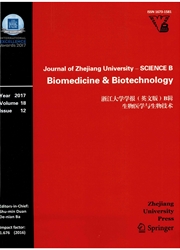

 中文摘要:
中文摘要:
文章阐述了内质网应激信号通路及其训控机制;补充了最新的调控通路;探讨了内质网应激与肿瘤发生和细胞凋亡的关系。同时将内质网信号通路全面概括到一张图中,综合闸述了朱折叠蛋白反应(UPR)的调控机制,并把内质网应激与细胞凋广、肿瘤发生关联到一起,方便读者更好地了解与学习内质网应激。
 英文摘要:
英文摘要:
Within the cell, several mechanisms exist to maintain homeostasis of the endoplasmic reticulum (ER). One of the primary mechanisms is the unfolded protein response (UPR). In this review, we primarily focus on the latest signal webs and regulation mechanisms of the UPR. The relationships among ER stress, apoptosis, and cancer are also discussed. Under the normal state, binding immunoglobulin protein (BiP) interacts with the three sensors (protein kinase RNA-like ER kinase (PERK), activating transcription factor 6 (ATF6), and inositol-requiring enzyme la (IREla)) Under ER stress, misfolded proteins interact with BiP, resulting in the release of BiP from the sensors. Subsequently, the three sensors dimerize and autophosphorylate to promote the signal cascades of ER stress. ER stress includes a series of positive and negative feedback signals, such as those regulating the stabilization of the sensors/BiP complex, activating and inactivating the sensors by autophosphorylation and dephosphorylation, activating specific transcription factors to enable selective transcription, and augmenting the ability to refold and export. Apart from the three basic pathways, vascular endothelial growth factor (VEGF)-VEGF receptor (VEGFR)-phospholipase C-~ (PLCy)-mammalian target of rapamycin complex 1 (mTORC1) pathway, induced only in solid tumors, can also activate ATF6 and PERK signal cascades, and IREla also can be activated by activated RAC-alpha serine/threonine-protein kinase (AKT). A moderate UPR functions as a pro-survival signal to return the cell to its state of homeostasis. However, persistent ER stress will induce cells to undergo apoptosis in response to increasing reactive oxygen species (ROS), Ca2+ in the cytoplasmic matrix, and other apoptosis signal cascades, such as c-Jun N-terminal kinase (JNK), signal transducer and activator of transcription 3 (STAT3), and P38, when cellular damage exceeds the capacity of this adaptive response.
 同期刊论文项目
同期刊论文项目
 同项目期刊论文
同项目期刊论文
 期刊信息
期刊信息
